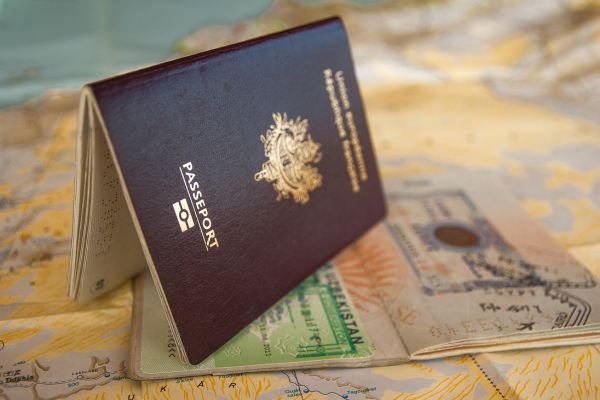Does an Infant Need a Passport to Travel to Canada?
Traveling to Canada, like many other international destinations, requires proper documentation for all travelers, including infants. Here are the detailed requirements and considerations for infants traveling to Canada:
Passport Requirements for Infants
Yes, infants need a passport to travel to Canada. Regardless of age, every individual traveling internationally must have a valid passport. This includes newborns and infants. The passport serves as an essential identification document that confirms the infant’s citizenship and identity.
Application Process for an Infant’s Passport
- Gather Required Documents:
- Proof of Citizenship: A birth certificate or a certificate of citizenship.
- Proof of Parental Relationship: The birth certificate usually serves this purpose as it lists the parents’ names.
- Parental Identification: Valid government-issued IDs for both parents or guardians.
- Passport Application Form: Complete the passport application form (DS-11 in the United States, or equivalent in other countries).
- Passport Photo:
- The passport photo requirements for infants are the same as for adults but with some leniency regarding facial expressions. The infant’s eyes must be open and clearly visible, and the background should be plain white or off-white.
- Parental Consent:
- Both parents or legal guardians must give consent for the issuance of the passport. If one parent cannot be present, a notarized consent form (Form DS-3053 in the U.S.) from the absent parent is required.
- Submit the Application:
- Submit the completed application form along with all required documents, photos, and fees to an authorized passport acceptance facility or passport office.
Additional Documentation
When traveling to Canada, parents should also carry additional documents, such as:
- Consent Letter: If one parent is traveling alone with the infant, a consent letter from the non-traveling parent may be required, authorizing the travel. This letter should include contact information and copies of the non-traveling parent’s ID.
- Health Documents: Immunization records and any necessary medical documents.
Travel Tips for Infants
- Preparation:
- Ensure all documents are up to date and readily accessible during travel.
- Check the expiry date of the infant’s passport well in advance.
- Comfort:
- Bring essential items for the infant’s comfort, such as a favorite toy, blanket, or pacifier.
- Plan for feeding and diaper changes, keeping supplies easily accessible.
- Security Screening:
- Be prepared for security screening. Infants must be carried through metal detectors, and their belongings will be scanned.
Exceptions and Special Circumstances
While a passport is generally required for all international travel, there may be specific exceptions or additional requirements in certain circumstances:
- Permanent Residents: Infants who are permanent residents of Canada may need to meet different re-entry requirements.
- Emergency Situations: In emergency situations where immediate travel is necessary, expedited passport services may be available.
Why Infants Need a Passport
- Identification and Citizenship: A passport is the most reliable form of identification and proof of citizenship for an infant. It includes crucial details such as the infant’s photograph, full name, date of birth, and nationality, ensuring that border authorities can easily verify their identity.
- International Travel Requirements: Many countries, including Canada, mandate that all travelers, regardless of age, have a valid passport for entry. This helps maintain security and track the movement of individuals across borders.
- Parental Authorization and Safety: The passport application process involves thorough checks, including parental consent and proof of relationship, which help prevent child abduction and ensure the safety of the infant.
Detailed Steps in the Application Process
- Proof of Citizenship:
- Obtain a certified copy of the infant’s birth certificate from the vital records office in the jurisdiction where the birth occurred. This document must clearly state the names of the parents and the place of birth.
- Parental Relationship Documentation:
- In cases of adoption, provide a decree of adoption that includes the full details of the adoption process and the names of the adoptive parents.
- Valid Identification:
- Both parents or legal guardians should present government-issued identification, such as a driver’s license or passport. These IDs should be current and valid.
- Complete the Passport Application Form:
- Fill out the passport application form accurately, ensuring all information matches the supporting documents. For the United States, this is Form DS-11, which must be signed in the presence of a passport acceptance agent.
- Passport Photos:
- Take passport photos that meet the specified requirements. Many photo centers and pharmacies offer passport photo services that are familiar with the guidelines. The photo must be clear, with the infant’s face fully visible and eyes open.
- Parental Consent:
- If both parents are not present at the submission, provide a notarized consent form (Form DS-3053 in the U.S.) from the non-present parent. This form confirms that the non-present parent consents to the issuance of the passport.
- Submission of the Application:
- Submit the completed application, photos, and supporting documents at an authorized passport acceptance facility, such as a post office or a designated government office. Pay the applicable fees for processing.
Maintaining the Infant’s Passport
- Renewal and Validity:
- Infant passports are typically valid for five years. Parents should keep track of the expiry date and renew the passport well in advance to avoid any travel disruptions.
- Updating Information:
- If there are significant changes, such as a legal name change or changes in custody arrangements, update the passport to reflect the new information.
Traveling with an Infant
- Comfort and Care:
- Pack a well-stocked diaper bag with essentials such as diapers, wipes, bottles, formula or breast milk, baby food, a change of clothes, and a blanket.
- Health Precautions:
- Carry any necessary medications, including infant pain relievers, and keep a copy of the infant’s medical records handy, particularly if traveling with a child who has health issues.
- Airport Security:
- Arrive early to allow extra time for security screenings. Infants will need to be carried through metal detectors, and strollers and car seats will go through x-ray machines.
Conclusion
In conclusion, infants indeed need a passport to travel to Canada. Proper preparation and understanding of the application process can help ensure a smooth journey. From gathering the necessary documents to ensuring comfort during travel, every step plays a crucial role in facilitating safe and hassle-free travel for you and your infant. By adhering to these guidelines and preparing well in advance, parents can avoid any last-minute complications and ensure a seamless travel experience to Canada.







